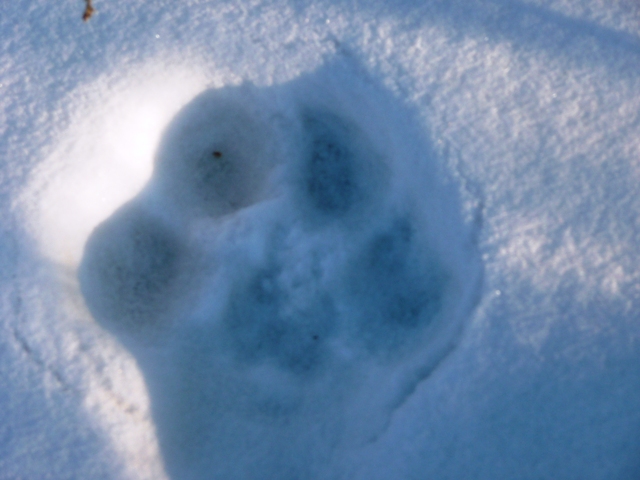
The paw print of a lynx is quite round compared to other species. It consists of 4 toe pads and an interdigital pad. Due to the extensive fur covering the bottom of the foot, the interdigital pad is small in proportion to the rest of the foot.
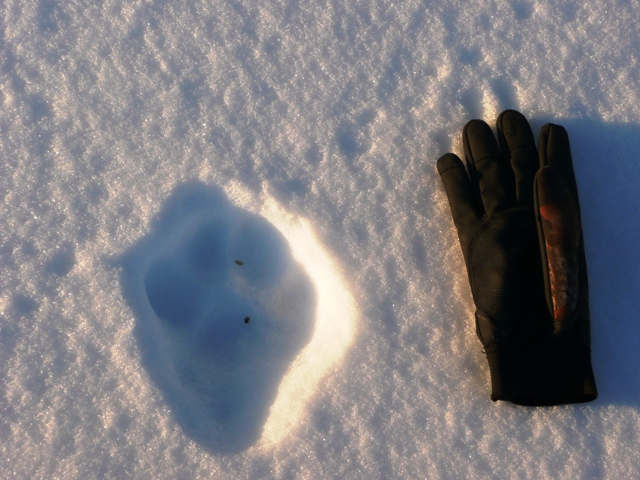
If the snow is deep enough, you will see the impression made by the furred heel of the lynx. This gives an “ice cream cone” shape to many tracks. In addition, the impression of the paw will “float” in the top of the snow, rather than sinking very deep into the snow bank. If a human or even a cougar stepped in this same spot, its track would sink much deeper into the snow. The paw print of a full grown lynx is about the size of a medium sized men’s glove, shown here.
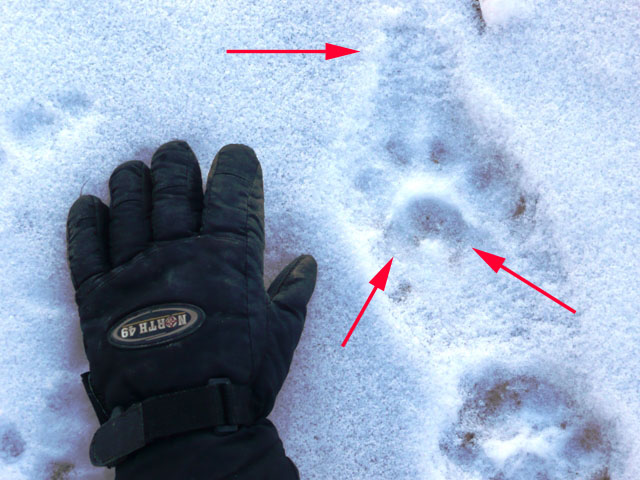
Often you will see a trough extending off the toes of the track, which is produced by dragging fur. If the interdigital pad is clear enough, you might also see the two elongated lobes at the bottom edge of the pad. This concave pattern produced by the lobes is a signature of cat tracks. In comparison, canine tracks would have a flat bottom edge to the interdigital pad.
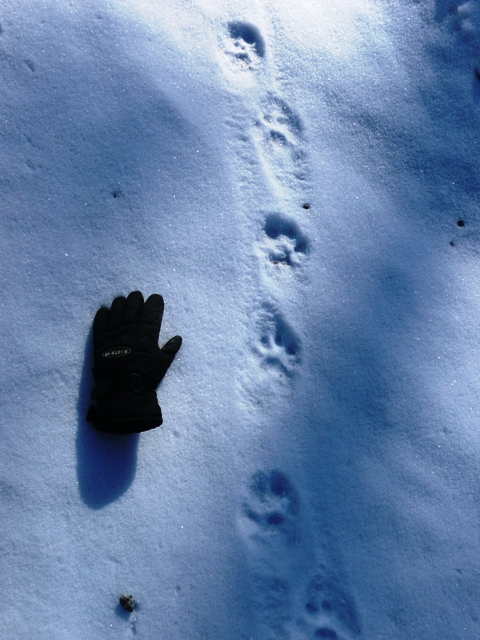
Here you can see a set of lynx tracks on a thin layer of snow, where troughs in the snow are produced by dragging fur.
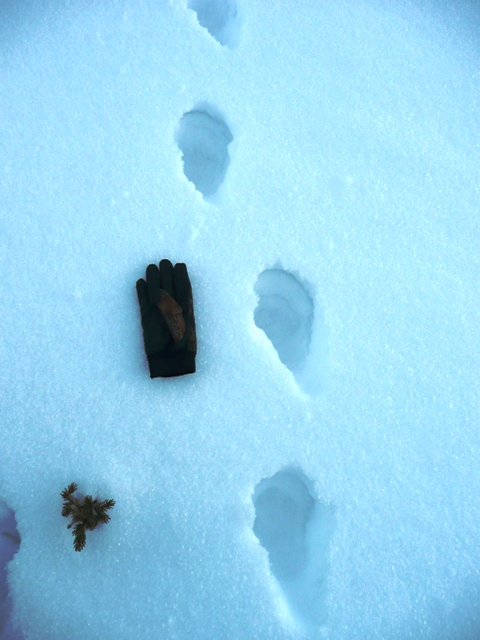
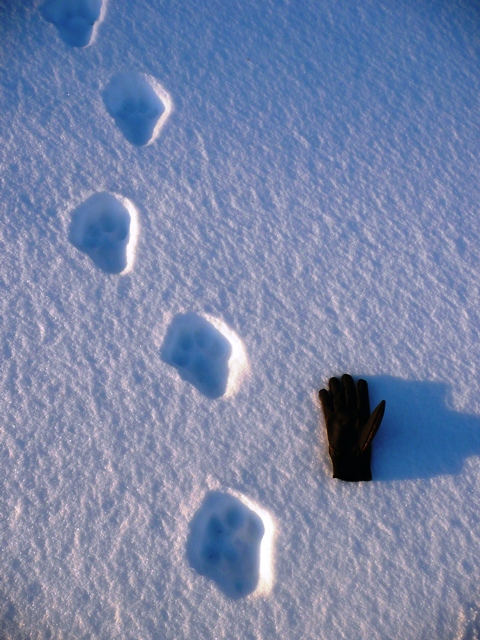
In these sets of tracks you can see the “ice cream cone” shape of the prints in relatively deep snow. The typical stride of a lynx is not very big. The paw prints themselves are the length of a size medium men’s glove AND they are separated by a spacing of about one size medium men’s glove. Strides much longer than this would be most likely made by a cougar, wolf, or ungulate.
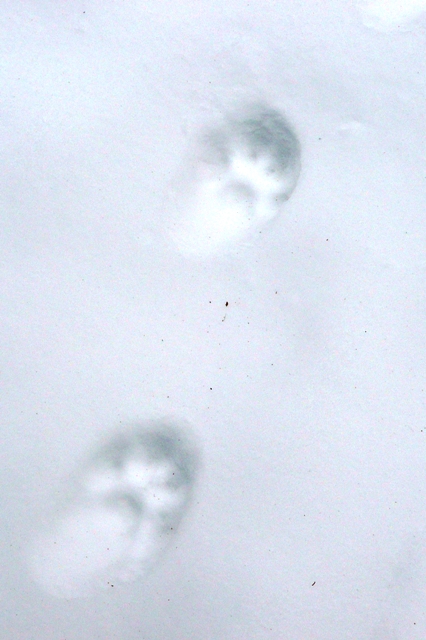
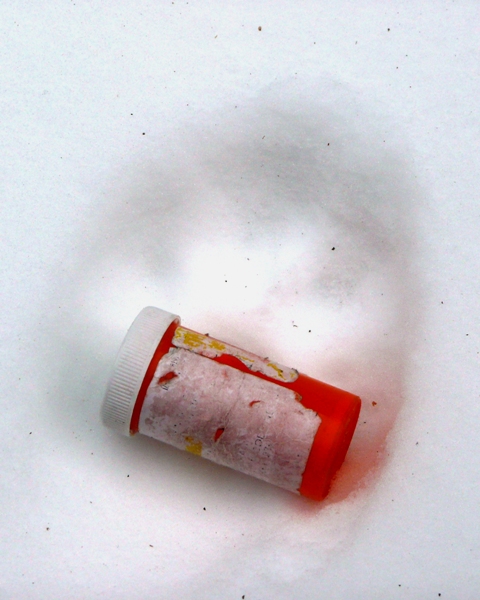
Kitten tracks look just like adult impressions, except they are smaller. A 7-month-old kitten track can still be a small as a pill bottle.
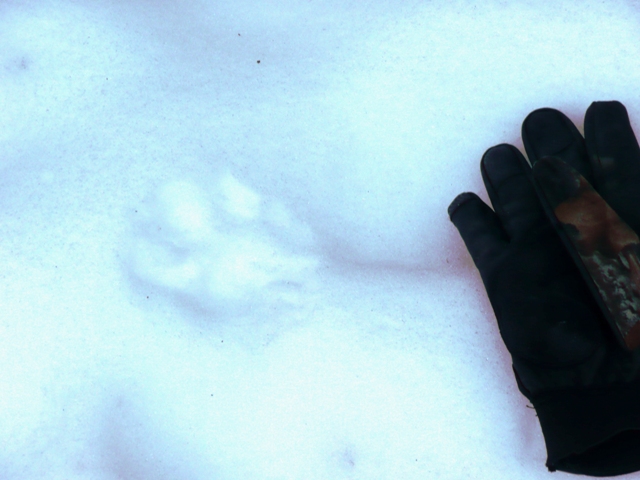
Kitten tracks, like this one made by an 8-month-old kitten, are usually found right next to the mother’s full-size tracks.
All pictures by S. & G. Yates.
